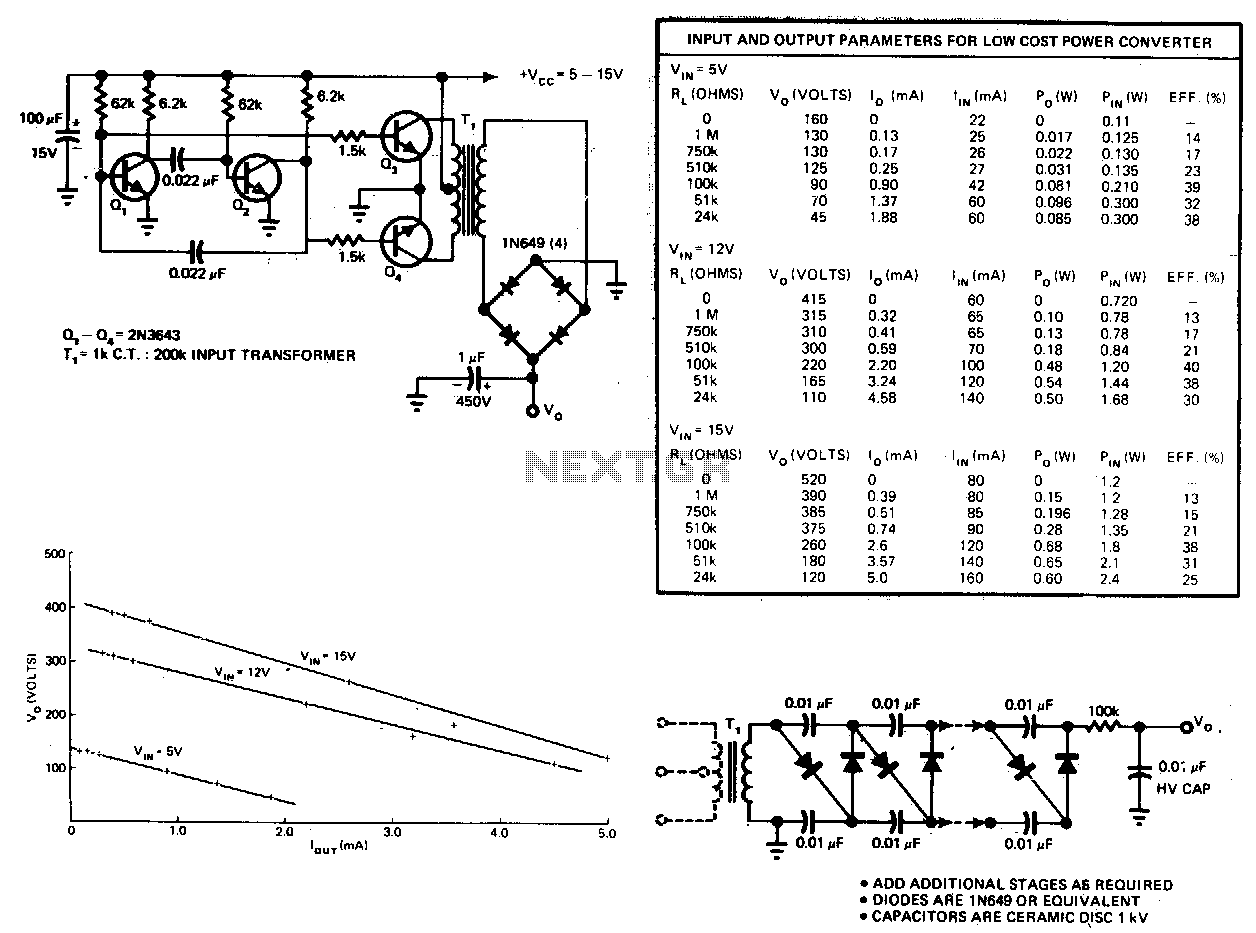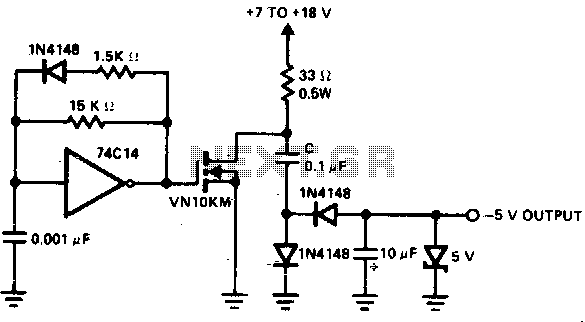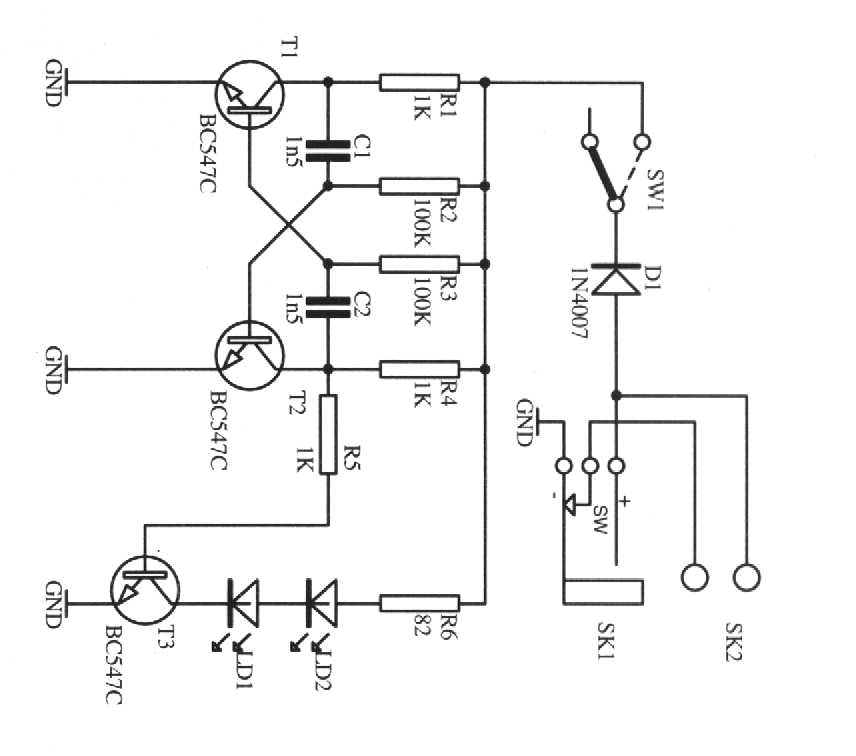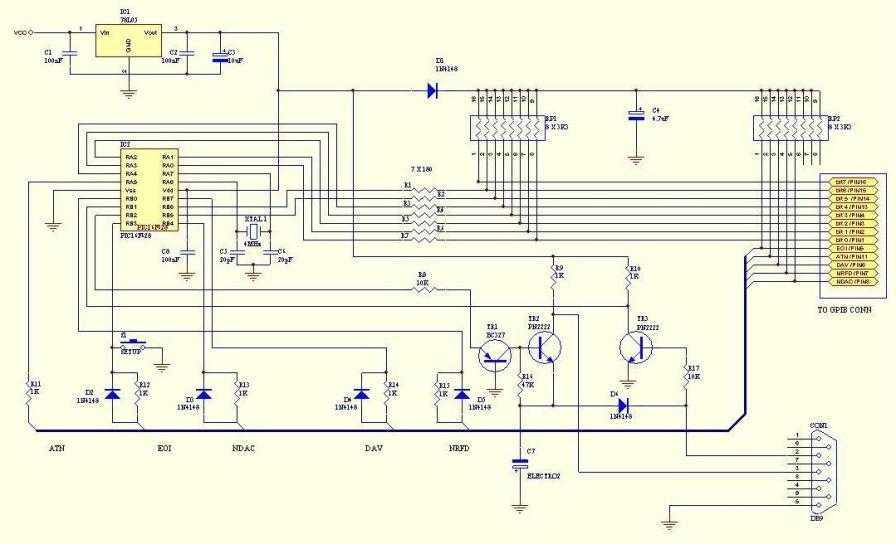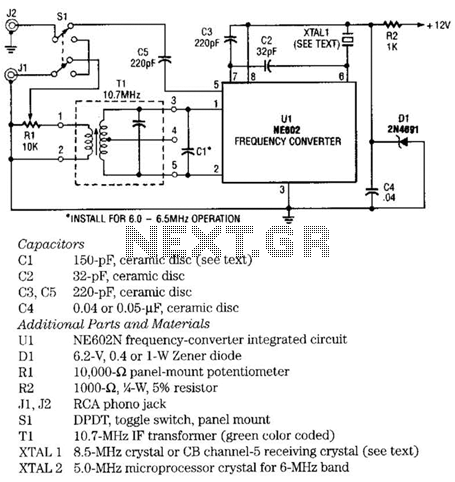
12V DC to 85V DC Converter
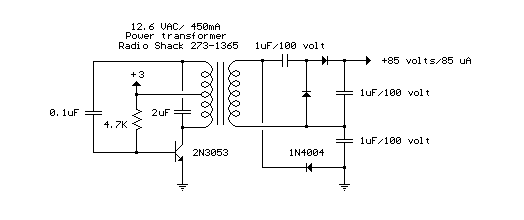
The circuit below is a DC to DC converter using a standard 12 VAC center tapped power transformer wired as a blocking oscillator. The circuit is not very efficient but will produce a high voltage usable for low power applications. The input battery voltage is raised by a factor of 10 across the transformer and further raised by a voltage tripler consisting of three capacitors and diodes connected to the high voltage side of the transformer. The circuit draws about 40 milliamps and should operate for about 200 hours on a couple of 'D' alkaline batteries. Higher voltages can be obtained by reducing the 4.7K bias resistor.
The described circuit functions as a DC to DC converter utilizing a center-tapped 12 VAC transformer configured in a blocking oscillator arrangement. This setup is designed to convert a lower DC voltage into a higher AC voltage, which is then rectified and further increased using a voltage tripler circuit. The blocking oscillator achieves oscillation through a feedback mechanism that allows the transformer to alternately energize and de-energize, generating a pulsed output.
In this circuit, the 12 VAC transformer is pivotal as it steps up the input DC voltage, which is typically derived from 'D' alkaline batteries. The center-tapped design allows for the generation of two equal voltages from the center tap to each end of the winding, facilitating the oscillation process. The output from the transformer is then fed into a voltage tripler, which consists of three capacitors and three diodes arranged to increase the voltage further. The diodes rectify the AC output from the transformer, while the capacitors store and charge the voltage, effectively tripling the output voltage level.
The circuit's efficiency is noted to be low, which is a common characteristic of blocking oscillators; however, it is adequate for low power applications where high voltage is required. The current draw is approximately 40 milliamps, allowing the circuit to operate for an extended duration, estimated at around 200 hours, on a pair of 'D' alkaline batteries. Adjustments to the circuit can be made to increase the output voltage; for instance, reducing the resistance of the 4.7K bias resistor will allow for greater oscillation frequency and, consequently, higher voltage output.
This circuit is particularly useful in applications where a compact, low-power high-voltage source is necessary, such as in gas tube lighting or small ionization devices. Proper attention should be given to component ratings, especially for the diodes and capacitors used in the voltage tripler, to ensure they can handle the elevated voltages produced during operation.The circuit below is a DC to DC converter using a standard 12 VAC center tapped power transformer wired as a blocking oscillator. The circuit is not very efficient but will produce a high voltage usable for low power applications. The input battery voltage is raised by a factor of 10 across the transformer and further raised by a voltage tripler consisting of three capacitors and diodes connected to the high voltage side of the transformer.
The circuit draws about 40 milliamps and should operate for about 200 hours on a couple of 'D' alkaline batteries. Higher voltages can be obtained by reducing the 4.7K bias resistor. 🔗 External reference
The described circuit functions as a DC to DC converter utilizing a center-tapped 12 VAC transformer configured in a blocking oscillator arrangement. This setup is designed to convert a lower DC voltage into a higher AC voltage, which is then rectified and further increased using a voltage tripler circuit. The blocking oscillator achieves oscillation through a feedback mechanism that allows the transformer to alternately energize and de-energize, generating a pulsed output.
In this circuit, the 12 VAC transformer is pivotal as it steps up the input DC voltage, which is typically derived from 'D' alkaline batteries. The center-tapped design allows for the generation of two equal voltages from the center tap to each end of the winding, facilitating the oscillation process. The output from the transformer is then fed into a voltage tripler, which consists of three capacitors and three diodes arranged to increase the voltage further. The diodes rectify the AC output from the transformer, while the capacitors store and charge the voltage, effectively tripling the output voltage level.
The circuit's efficiency is noted to be low, which is a common characteristic of blocking oscillators; however, it is adequate for low power applications where high voltage is required. The current draw is approximately 40 milliamps, allowing the circuit to operate for an extended duration, estimated at around 200 hours, on a pair of 'D' alkaline batteries. Adjustments to the circuit can be made to increase the output voltage; for instance, reducing the resistance of the 4.7K bias resistor will allow for greater oscillation frequency and, consequently, higher voltage output.
This circuit is particularly useful in applications where a compact, low-power high-voltage source is necessary, such as in gas tube lighting or small ionization devices. Proper attention should be given to component ratings, especially for the diodes and capacitors used in the voltage tripler, to ensure they can handle the elevated voltages produced during operation.The circuit below is a DC to DC converter using a standard 12 VAC center tapped power transformer wired as a blocking oscillator. The circuit is not very efficient but will produce a high voltage usable for low power applications. The input battery voltage is raised by a factor of 10 across the transformer and further raised by a voltage tripler consisting of three capacitors and diodes connected to the high voltage side of the transformer.
The circuit draws about 40 milliamps and should operate for about 200 hours on a couple of 'D' alkaline batteries. Higher voltages can be obtained by reducing the 4.7K bias resistor. 🔗 External reference
Warning: include(partials/cookie-banner.php): Failed to open stream: Permission denied in /var/www/html/nextgr/view-circuit.php on line 713
Warning: include(): Failed opening 'partials/cookie-banner.php' for inclusion (include_path='.:/usr/share/php') in /var/www/html/nextgr/view-circuit.php on line 713
